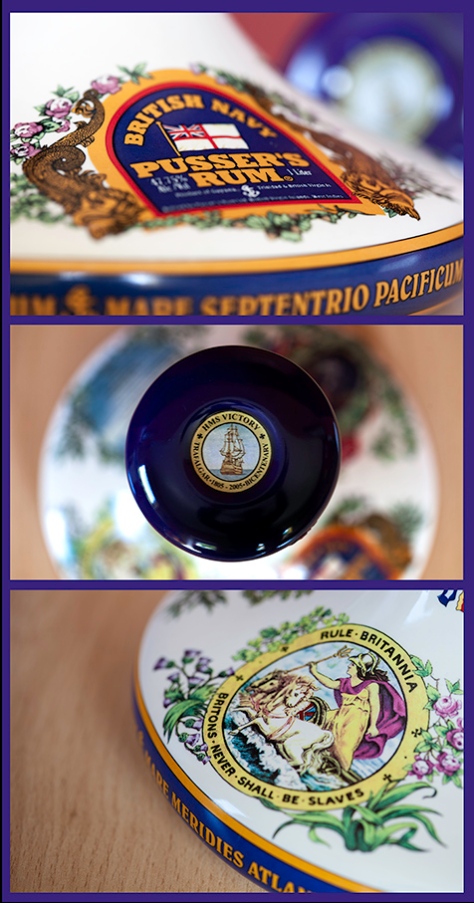This memorandum from the Admiralty board of the Royal Navy sounded the death knell of the daily rum ration to the ratings.
Introduced in 1655 after the previous ration of beer proved unsupportable on long voyages, the sailors on board were initially provided with half a pint of rum per day (at gunpowder proof too – see https://thecocktail.guru/2015/04/15/measurement-of-alcohol/ for details) until 1740 when it became watered down and split into two servings per day.
The man responsible for this was Admiral Edward Vernon who’s nickname ‘Old Grog‘ came from the grogram cloak he always wore. He was so concerned about the level of drunkenness throughout the ship’s crews that at Port Royal in August 1740 he issued an order from the HMS Burford to tackle ‘the pernicious custom of the seamen drinking their allowance in drams and often all at once, which is attended to many fatal effects to their morale as wells to their health”.
Vernon had a very distinguished career in the Royal Navy, in November 1739, he captured the (now Panamanian) colony Porto Bello from the Spanish which was hailed back in Britain as huge coup. The Portobello Road in London was named for this victory as well as an area of Dublin and another in Edinburgh, and Rule Britannia was composed as part of the victory celebrations.
The engagement at Porto Bello was part of the ‘War of Jenkins’s Ear‘. In 1731, a Captain called Robert Jenkins was carrying sugar from Jamaica to London in his ship Rebecca when he was boarded by the Spanish who accused him of carrying contraband. They tied him to the rigging and tried to get him to admit he was carrying treasure and when he didn’t, they cut off his ear and told him to take it back to King George. In 1738, when a parliament committee were investigating disputed with Spain, Jenkins presented his ear which had been preserved in a jar of rum. This stirred up such an angry feeling that the PM Robert Walpole declared war on Spain and her ally France.
In 1810, the exact blend of the rums used for the daily ration were codified by the Admiralty and the same blend was used right until the very end of its issuance in 1970 even though the amount had been subjected to repeated savaging, firstly in 1823 when it was halved and again in 1850 when it was halved again. By the time Black Tot Day came around on July 31st, it was a ceremonial amount of 59ml diluted with 188ml of water.
Following the final up spirits between 11 and 12 on that mournful day, Charles Tobias managed to persuade the Admiralty to sell him the rights to commercialise the rum blend which had been used and in 1979, launched Pusser’s Rum.
Tobias was a frequenter of the Soggy Dollar Bar in Jost Von Dyke, BVI and a friend of the owner Daphne Henderson. The six-seater bar famously didn’t have a dock so visitors had to swim ashore in order to buy drinks with their soggy dollars. Henderson’s speciality was a drink called the Painkiller, the recipe to which she kept a carefully guarded secret. Charles Tobias worked very hard to emulate her recipe and, in using his own rum, not only came very close to the original but perhaps made it a little better. According to the brand, patrons of the bar were given samples of both Henderson’s and Tobias’s versions and the crowd overwhelmingly voted for the recipe with Pusser’s.
Since then, Pusser’s went on to trademark the Painkiller with the approval of Henderson and around the World, a Painkiller can/should only be made with Pusser’s (and the 54.5% version too for my mind!)
Painkiller
60ml Pusser’s Rum
120ml pineapple juice
30ml orange juice
30ml coconut cream
Shake and strain into a suitable receptacle (the Soggy Dollar Bar uses plastic beakers)
Garnish with a grating of nutmeg





